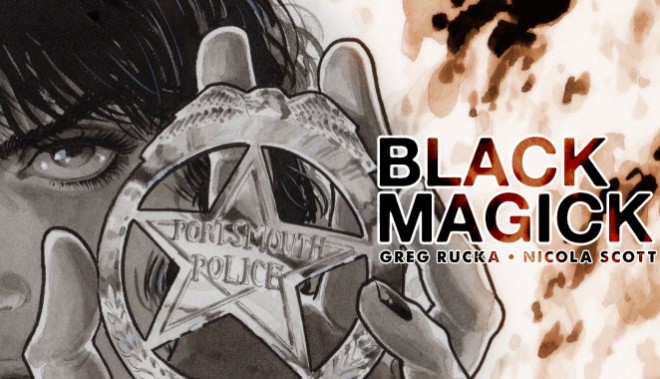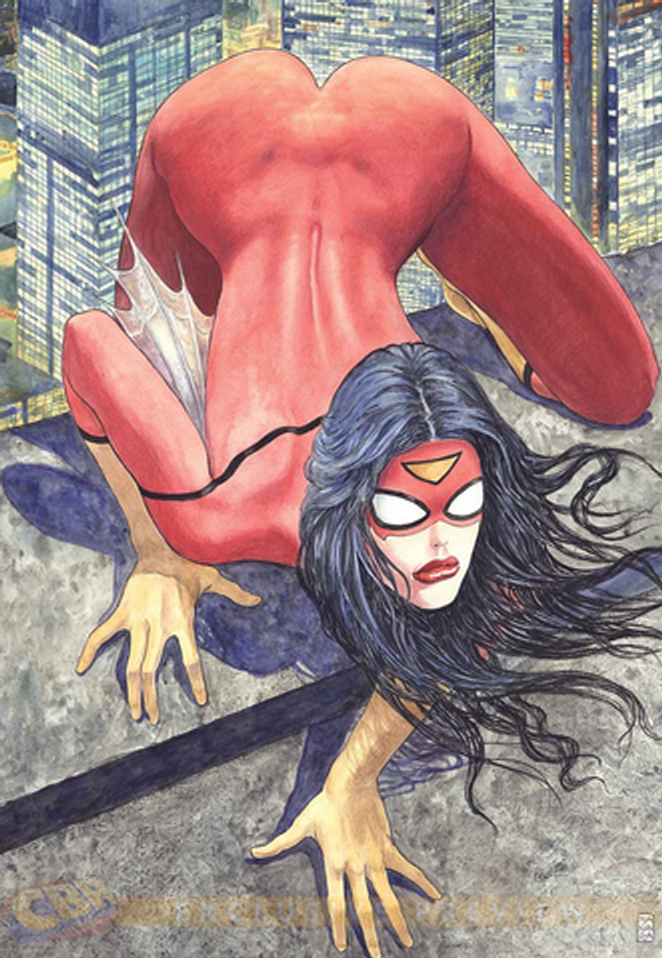The Death Of The Boys Club: Is This A Golden Age For Women In The Comics Industry?
According to Nicola Scott (one of the artists behind 'Earth-2', 'Birds of Prey', and 'Wonder Woman'), things are pretty damn good.

In 1994, a group of women working in the comics industry founded a non-profit called Friends Of Lulu to support and promote women reading and making comic books. The name was in honour of Little Lulu: the defiant and cheeky heroine of Marjorie Henderson Buell’s popular 1930s newspaper strip, who was perpetually trying to get the local boys to let her into their clubhouse (or just treat her with a little damn respect).
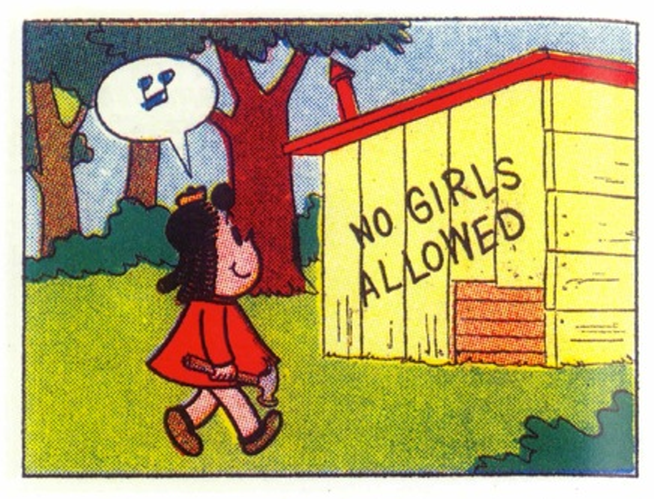
By the time Friends of Lulu folded in 2011 (after having its non-profit status revoked by the IRS), the clubhouse had well and truly been infiltrated. While women had always been part of the industry, the stripperific bulging excess of the Liefeldian ’90s nadir, a spectacular bust of the market (which sent Marvel into bankruptcy!), and the concurrent steady growth of alternative comics (where women routinely found more opportunities), the flailing mainstream comics industry was more than ready for some fresh blood.
It was a slow climb — in 2002, Lulu co-founder Trina Robbins wrote, “In American mainstream superhero comics, women readers are rare and working women artists can be counted on the fingers of one hand” — but 15 years into the new century, women are driving some of the most exciting books going, and the divide between Marvel, DC, indies and graphic novels is more porous than ever when it comes to poaching female talent.
From G. Willow Wilson’s bestselling, pioneering Ms Marvel and Kelly Sue DeConnick and Valentine DeLandro’s fiercely feminist hit Bitch Planet, to Raina Telgemeier’s chart-conquering stories and Gail Simone and Nicola Scott’s just-announced character redesigns and roadmaps for some of the near-nakedest ladies in comics, mainstream comics culture may be more women-friendly than ever.
–
How Do The Women In The Industry Feel About This?
Much of this history is traced in a documentary, She Makes Comics, screening (for free) at Graphic this weekend at the Sydney Opera House. And, according to director Marisa Stotter and creative consultant (and Graphic Novels Librarian at Columbia University) Karen Green, there’s definitely been a shift in the industry when it comes to both the participation and the representation of women.
“I think a lot depends on whether you’re talking about mainstream or alternative comics,” Green says. “The tipping point in the latter has come and gone: if you go to an indie comics festival, you’re very likely to see more women than men both behind the tables and in the crowd. I hear from friends who teach cartooning that their classes are now predominantly female, as well. In the mainstream… I don’t know. It’s been nice to see breakout stars like Gail Simone or Kelly Sue DeConnick or Fiona Staples [who draws smash hit Saga]; women who are getting the same crowds as their male counterparts.”
“I’m not sure I would say that mainstream publishers are making a terribly active push to welcome female readers, though — there have been so many stories, even recently about pushback on depictions of women in those comics, which to me demonstrates that the big guys still don’t entirely get it.”
Stotter takes a slightly more optimistic approach, suggesting this is in fact catching on more. “I think the major publishers are finally taking note of how diverse their fanbases are,” she says. “They’re following in the footsteps of indie comics, which have always been ahead of the curve, by bringing in writers and artists from different backgrounds to tell the stories that are important to them.”
Also appearing at Graphic this weekend is Nicola Scott: a Sydney-based artist who’s worked with IDW, Dark Horse and DC. Drawing from her Potts Point home since 2007, she’s worked on major titles like Earth-2, Wonder Woman and Birds of Prey and has more recently focussed on Black Magick: a creator-owned, female protagonist-driven book made in collaboration with Greg Rucka.
Observing crowds from behind convention tables for some years now, she believes that the accessibility of comics and geek culture in general has increased both broadly and for women specifically. Like many fans, Scott fell in love with comic characters like Wonder Woman purely via TV adaptations, rather than through dutifully collecting single issues — but that was a different proposition when she was younger.
“If I saw a Marvel comic, I’d just be like ‘I have no idea who these people are, because they don’t have film and TV shows in the same way [they do now]’… If I found a Wonder Woman comic, I’d pick it up, and I’d read through it, and I’d just go ‘I don’t know what’s happening here, because it’s not like the TV show’. Any time I walked into a comic bookstore, when I finally found one of those, I felt like I didn’t belong.”
On this point, Scott actually nominates an unlikely piece of genre fiction as the modern gateway drug for budding geeks. “Shit on it as much as you want, but Twilight really changed the landscape in a big way; suddenly girls who weren’t geeky were interested in something that was geeky. A lot of them just moved on to the next thing, but for some of them it was their opportunity to see that there was more geeky stuff that was interesting for them, and they stuck around and now live in the embarrassment and shame of having loved Twilight once upon a time. It brought them into the fold.”
Of course, one of the biggest other equalisers has been the internet. Many female fans and creators first walked into a comic shop to be met by a cloud of teen boy fart and hostility then promptly walked out again. Now they’ve found a warmer and slightly more pleasantly scented welcome in forums, Tumblr, DeviantArt and fan-fic communities.
“Because of the online communities, female fans have found each other,” Scott says. “If they haven’t found each other at a comic bookstore, they found each other online, and those communities have really built up and become strong.”
–
Representation, Sexual Agency, And Spider-Woman’s Butt
Amid the usual (though slowly fading) bleats about political correctness gone mad, there’s also been a shift in the way female characters are portrayed. From the earliest newspaper strips, women were drawn almost universally as paragons of beauty, and women’s bodies that weren’t conventionally attractive were almost non-existent on the page. As female superheroes became more common, their naturally (or supernaturally) perfect physiques were also the perfect excuse for mostly-male art teams to draw only “ideal” bodies, in a way that became increasingly sexualised.
“There’s no question that mainstream comics have had their styles shaped by the male gaze!” Green says. “I don’t know if it’s been a deterrent to women making comics — it seems almost more like a thrown gauntlet — but it’s certainly been a deterrent to me reading them.”
“For a character like Wonder Woman, who has been in a bathing suit since the ’40s, it wasn’t really until the ’90s that that costume became sexualised,” Scott explains. “When she was created, it was meant to be scandalous in an empowering way, and then in the ‘90s it became scandalous in a misogynist way … She would be naked if she could. She’s completely comfortable with herself. All they need is for it to not be sexualised. I think, in The New 52, how she was drawn there was fantastic because she just looked like a warrior woman. She was still in her pretty traditional version of the outfit, only slightly tweaked. Cliff Chiang did a beautiful job of not, in any way, sexualising her.”
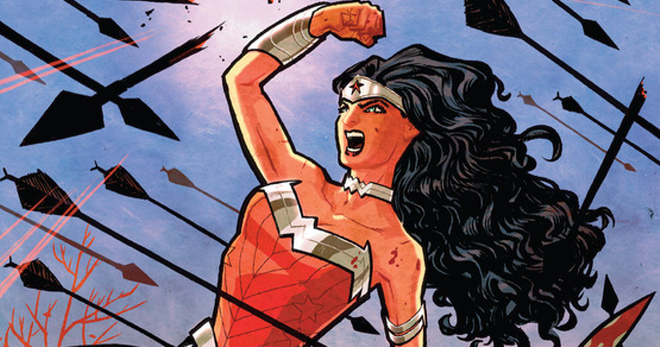
Cropped cover of Wonder Woman: The New 52. (Vol 4 1)
But that’s not to say that sexy is off-limits — for Scott, it’s all about agency. She wasn’t offended by the now-infamous Spider-Woman variant cover by Milo Manara, for instance, but understands why the heroine’s lovingly outlined, lifted and separated bum cheeks and surreal afterthought of a face pissed people off.
“It was like, if you’re looking at her face, you’re looking at the wrong thing,” she says. “[That] was clearly the message.”.
“I think Catwoman is a sexual predator, and she uses her sex appeal as one of her weapons. So, I have no problem with her being sexualised as long as she’s in charge, because she is in charge. Wonder Woman, on the other hand, is beautiful and sexy, but she’s not working her body at all. She is there for business.”
–
Where To From Here?
This year’s Ignatz Awards — the main prizes for small-press and self-published comics and graphic storytelling — were all taken out by women this year for the first time. It would have been fun, Green says, to have included this feat in She Makes Comics, but it’s something that might soon become as unremarkable as all-male fields might once have been.
“It’s not as easy to be a boys’ club anymore because there isn’t really a ‘club’,” she says. “Back in the days when the Big Two [Marvel and DC] and all their artists and writers were located in New York, and had to bring their work in by hand, there had to have been a very clubby atmosphere. Nowadays, publishers are using artists they may never even have met face-to-face!” Scott says she enjoys working at a distance from “any drama” at the big American publishing houses.
Stotter is similarly (cautiously) optimistic about what could be the beginning of a real Golden Age for women in the industry.
“My understanding is that it’s gotten a lot better for women working in comics over the past few years,” she says. “There are still problems, but the trend is moving upward: we’re seeing more and more women working in comics at every level, from the executive to the creative. That is something worth celebrating.”
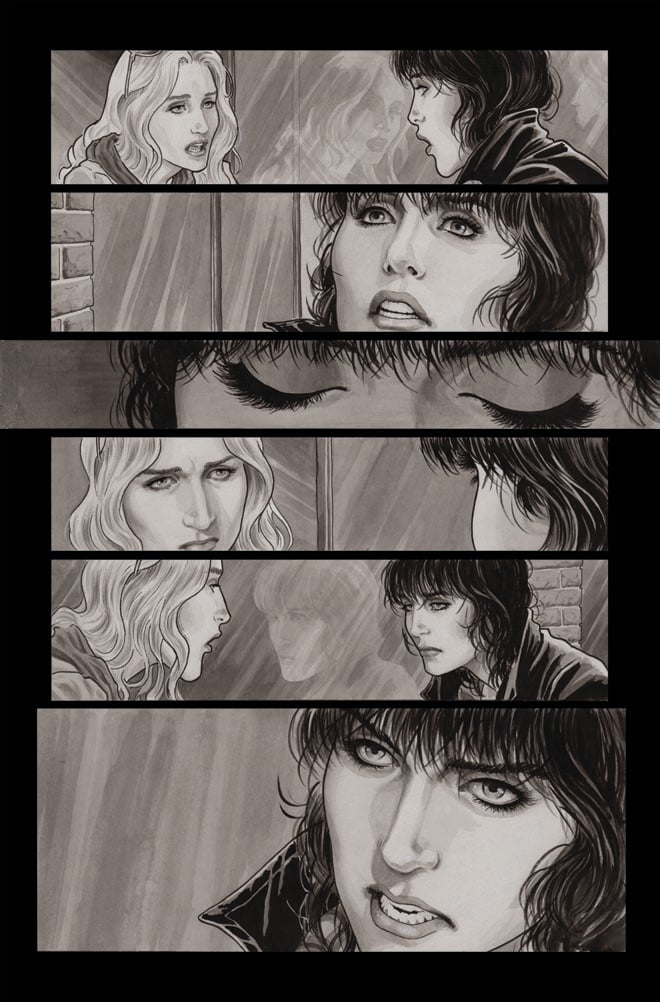
An exclusive panel from Nicola Scott’s Black Magick, set to be released later this month.
–
Graphic will be at the Sydney Opera House this weekend. She Makes Comics is screening at 11am and 7pm on Sunday and Nicola Scott is giving a broader talk about her career at 5.45 on Sunday. Check out the full program here.
–
Feature image courtesy of Nicola Scott.
–
Caitlin Welsh has written for The Guardian, The BRAG, Mess + Noise, FasterLouder,Cosmopolitan, The Vine, and more. She tweets from @caitlin_welsh.


